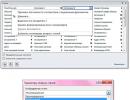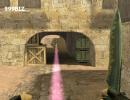Italy code rome. Addresses and telephone numbers in Rome
There are simple dialing rules for using international communications. First you need to dial a special international access code. Each country has its own international code. For example, to call from Russia to any foreign country, you need to dial the code “810”. Then you need to enter the country code, in this case the Italian code is “39”. Next you need to enter the city code. For example, if you need to call Rome, then the area code will be “6”. And only after this your friend or acquaintance who is in Italy. So, let’s say you need to call Rome at 123-23-23, then you should dial “810 39 6 123 23 23”.
The cost of one minute of call will depend on your telephone company, as well as on the tariff. The price of the call may vary depending on what time of day (day or night) and what day of the week (weekdays or weekends) was made. The big disadvantage of international calls to Italy from landlines is the very high cost.
International calls from a mobile phone
Dialing rules for international calls from a mobile phone depend on the operator. For example, in Russia, popular mobile operators are Beeline, Megafon and MTS. First you need to activate the service to make international calls. For example, MTS has such a service called “International Access”.
To call Italy from the mobile operator "MTS" you need to dial the same international access code as from a landline phone - "810", the country code - "39", the city code (Rome) - "6" and the subscriber's phone number. The difference between mobile and landline phones is that instead of the “810” code, you can simply enter the “+” sign. That is, to call Italy you will need to dial +39 6 123 23 23. Beeline and Megafon have exactly the same rules for international calls. The cost of an international call from a mobile phone will be significantly less than from a landline, although it all depends on the chosen tariff.
International calls via Skype
You can also make calls using a computer. To do this, you need to install a special program, for example, Skype. This program allows you to call your friends around the world for free. It doesn’t matter where your interlocutor is located - in Italy or in any other country - all you need is for both of you to have Skype installed.
Making a call via Skype is very easy. You need to add your interlocutor as a friend, then right-click on his name and select “Call”. For more comfortable communication, you can use a webcam.
The international dialing code for Italy is 39. You can call it from both a landline and a mobile phone. The main thing is that the international communication service is connected.
Instructions
To call Italy from a landline, first dial 8 and wait for the dial tone (on some modern PBXs there will be no dial tone after eight). Then dial 10 and wait for a new dial tone (which may also not be present on some modern PBXs). Now dial the Italy code - 39, then the Italian city code, and after that the number of the called party. Please note that international landline services are provided on credit. If the conversation takes too long, you will have to pay a significant amount at the end of the month. Do not make international calls without the consent of the person paying your phone bill.
In the same way, you can call Italy from a card phone, if it supports this service. The dialing rules are similar, but the limit of funds that can be spent is limited by the amount on the card, which is safer.
On prepaid tariffs of cellular operators, international communication service is usually enabled by default. On postpaid plans, it most often needs to be turned on by visiting the operator’s office and paying a deposit. In the second case, all communication services, including international, are provided on credit. On a home network, the cost of a call to Italy consists of the cost of a local outgoing call and the cost of an international call. Billing is usually per minute.
This site is dedicated to self-learning Italian from scratch. We will try to make it the most interesting and useful for everyone who is interested in this beautiful language and, of course, Italy itself.Interesting about the Italian language.
History, facts, modernity.
Let's start with a few words about the modern status of the language; it is obvious that Italian is the official language in Italy, the Vatican (simultaneously with Latin), in San Marino, but also in Switzerland (in its Italian part, the canton of Ticino) and in Several districts in Croatia and Slovenia, where a large Italian-speaking population lives, Italian is also spoken by some of the residents on the island of Malta.
Italian dialects - will we understand each other?
In Italy itself, even today you can hear many dialects, sometimes it is enough to travel only a few tens of kilometers to encounter another of them.Moreover, dialects are often so different from each other that they can seem like completely different languages. If people from, for example, the northern and central Italian “outback” meet, they may not even be able to understand each other.
What is especially interesting is that some dialects, in addition to the oral form, also have a written form, such as the Neopolitan, Venetian, Milanese and Sicilian dialects.
The latter exists, accordingly, on the island of Sicily and is so different from other dialects that some researchers distinguish it as a separate Sardinian language.
However, in everyday communication and, especially, in large cities, you are unlikely to experience any inconvenience, because... Today, dialects are spoken mainly by older people in rural areas, while young people use the correct literary language, which unites all Italians, the language of radio and, of course, television.
It may be mentioned here that until the end of the Second World War, modern Italian was only a written language, used by the ruling class, scientists and in administrative institutions, and it was television that played a big role in the spread of the common Italian language among all inhabitants.
How it all began, origins
The history of the formation of modern Italian, as we all know it, is closely connected with the history of Italy and, of course, no less fascinating.Origins - in Ancient Rome, everything was in the Roman language, commonly known as Latin, which at that time was the official state language of the Roman Empire. Later, from Latin, in fact, the Italian language and many other European languages arose.
Therefore, knowing Latin, you can understand what a Spaniard is saying, plus or minus a Portuguese, and you can even understand part of the speech of an Englishman or a Frenchman.
In 476, the last Roman emperor, Romulus Augustulus, abdicated the throne after the capture of Rome by the German leader Odocar, this date is considered the end of the Great Roman Empire.
Some also call it the end of the “Roman language”, however, even today disputes still rage as to why exactly the Latin language lost its relevance, because of the capture of the Roman Empire by barbarians or was it a natural process and in what language? spoken towards the end of the Roman Empire.
According to one version, in ancient Rome by this time, along with Latin, the spoken language was already widespread, and it is from this popular language of Rome that the Italian that we know as Italian of the 16th century comes from, according to the second version, in connection with the invasion of the barbarians Latin mixed with various barbarian languages and dialects, and it is from this synthesis that the Italian language originates.
Birthday - first mention
The year 960 is considered the birthday of the Italian language. This date is associated with the first document where this “proto-vernacular language” is present - vulgare, these are court papers related to the land litigation of the Benedictine Abbey, witnesses used this particular version of the language so that the testimony would be understandable to as many people as possible, until this moment in all official papers we can only see Latin.And then there was a gradual spread in the ubiquitous life of the language vulgare, which translates as the people's language, which became the prototype of the modern Italian language.
However, the story does not end there, but only becomes more interesting and the next stage is associated with the Renaissance and with such well-known names as Dante Alighiere, F. Petrarch, G. Boccaccio and others.
to be continued...
On line translator
I suggest that all guests of my blog use a convenient and free Italian online translator.If you need to translate a couple of words or a short phrase from Russian to Italian or vice versa, you can use the little translator on the sidebar of the blog.
If you want to translate large text or need other languages, use the full version of the online dictionary, where there are more than 40 languages on a separate blog page - /p/onlain-perevodchik.html
Italian language tutorial
I present a new separate section for all students of the Italian language - Italian language self-instruction manual for beginners.Making a blog into a full-fledged Italian tutorial is, of course, not easy, but I try to give the most convenient and logical sequence of interesting online lessons so that you can learn Italian on your own.
There will also be a section - an audio tutorial, where, as you might guess, there will be lessons with audio applications that can be downloaded or listened to directly on the site.
How to choose an Italian language tutorial, where to download it, or how to study it online, you will find information about this in my posts.
By the way, if anyone has ideas or suggestions on how best to organize such a tutorial on our Italian blog, be sure to write to me.
Italian on Skype
Secrets of how you can learn Italian on Skype for free, whether you always need a native speaker, how to choose a teacher, how much it costs to learn Italian via Skype, how not to waste your time and money - read about all this in the section “Italian language on Skype.”Come in, read and make the right choice!
Italian phrasebook
Free, Fun, with a native speaker - a section for those who want to learn words and phrases on certain topics.Join, listen, read, learn - voiced Italian phrasebook for tourists, shopping, airport, everyday situations and much more
In chapter "
If you need to find out any questions about your vacation, the telephone code for Rome is 06, and the code for Italy is 39. In Italy it costs almost the entire year.
True, in the summer it is somewhat hot, but this is not at all the sweltering heat that in the tropics - there is low humidity here. In the summer months the temperature is about +25 degrees, in winter +7. Although sometimes there are slight frosts.
The only thing that can cause slight discomfort is a strong wind: in summer it is a hot and suffocating sirocco, in winter it is a strong and gusty tramontana.
All telephone numbers (even when calling local lines) are dialed with an area code. That is, in order to call Rome from Russia, you first need to dial the country code, then the Rome code, and then the number itself. Example: 8-10-39-06-876-54321.
Rome is located in the center of the Italian boot, approximately 26-27 km from the west coast - once this distance was slightly less. The skeletons of the structures of the ancient port of Ostia Antica, which was once located at the mouth of the Tiber (the river, meandering like a snake, divides the city into two parts), now stick out lonely in the Tyrrhenian Sea a few kilometers from the coast. The city itself is located in Compagna - a hilly plain (heights range from 13 to 141 meters), bordered by the Sabatini, Albani and Prenestani mountains.
The historical center is located on seven hills, and only a quarter of the city's area of 1,507 sq. km is built up - in this Rome is very different from most European capitals. And not only this.
The incompatible is combined here. The richest city, ancient squares, fountains, peacefully coexists with numerous buses, modern cars and scooters - as if it were completely natural.
And that's not all. Rome, being the capital of Italy (the Senate, government offices, courts, banks, etc. are located here), is also the center of Catholicism.
This is a huge number of pilgrims, religious universities, seminaries, and governing bodies of numerous orders. This is the unique code of Rome, not the numbers you need to dial to make a call.
Most of the buildings of Ancient Rome are located. These are the Pantheon, the Colosseum, the Forum, the Baths of Caracalla, as well as the main streets with squares and buildings. The main attraction of the western bank of the river is the Vatican, and of course, St. Peter's Cathedral.
How to call Italy has already been said. If you want to call Rome while in Italy, dial the Rome code first, and then the number.
- Embassy Address: Via Gaeta 5, 00185 Roma, Italy. Tel.: + 39 (06) 4941680/1/3, fax: + 39 (06) 491031, e-mail: [email protected]
,official site: www.ambrussia.com
- The Consular Section: Via Nomentana, 116, 00187, Roma, Italy. Tel: +39 (06) 442 35 625 (call on weekdays from 8.00 to 12.00), +39 (06) 442 34 149, fax: +39 (06) 442 34 031, e-mail: [email protected]
- Online telephone helpline: +39 (06) 929 37 196
Emergency numbers in Rome
- Ambulance (Pronto soccorso) - 5510 (in other Italian cities - 188). In case of hospitalization, the tourist must present a passport and insurance policy, and also call his insurance company in Russia. There is a medical center at the Russian Embassy in Rome.
- Information - 100
- Police (carabinieri) - 4686 (in other Italian cities 113)
- Fire service - 115
Calls from Russia to Rome and from Rome to Russia
- When calling from Russia to Rome on a landline, you need to dial: 8, dial tone, 10, Italy code 39, Rome code 06, then the phone number. When calling by mobile phone, dial: +39, Rome code 06, then the phone number.
- When calling from Rome to Russia you need to dial: Russia code 007, area code, then phone number. You can call from any pay phone using a calling card, which is sold in newspaper or tobacco kiosks (minimum card value - 5 euros), from a hotel (by first dialing 0 and waiting for a long beep), from a mobile phone in roaming (by dialing +7, area code and subscriber number).
Restrictions on the import and export of goods
- Upon entering Italy are not subject to duty: household equipment and appliances for personal use, medicines for personal use, 2 liters of wine, 1 liter of strong alcohol (above 22%), eau de toilette 250 ml., perfume 50 ml., 200 cigarettes, 50 cigars, 250 grams . tobacco Wine and tobacco are permitted for import only to persons over 17 years of age. There are no restrictions on currencies up to 10,000 euros. If the amount is greater, you must fill out a customs declaration and obtain permission from the customs authorities. Prohibited for import: milk chocolate, dairy products, sausage and canned food.
- When leaving Italy You must remember that goods and souvenirs purchased in Italy are freely exported, with the exception of items that fall under the category of “historical and artistic value, antiques.” If the age of such an item exceeds 50 years (for antique furniture 100 years), the tourist must obtain permission from the Export Directorate of the Italian Ministry of National Heritage. In any case, when purchasing precious stones, works of art and archaeological treasures, it is a good idea to check with the seller whether you need to obtain an export permit.
Fines
- Italy has a strict smoking law that came into force on January 1, 2005. The fine can reach 500 euros. Smoking is prohibited in all public places: restaurants, bars, cafes, clubs, train stations, some hotels, etc. Smoking in the presence of a pregnant woman or child significantly increases the fine.
- When buying counterfeits (bags, watches, etc.) on the streets of Italy, a tourist risks being fined up to 10,000 euros. So far, only two cases of fines are known, but I advise you to think twice before buying a Louis Vuitton handbag for 40 euros on street corners.
- Tourists renting cars should remember that if more than 0.5 ppm of alcohol is found in the driver’s blood, he will have to pay a fine of 500 to 2,000 euros, and if more than 0.8 ppm, then in addition to a fine of 3,000 euros, the driver will receive a real prison sentence of six months. All drivers in Italy must stop at pedestrian crossings; if the driver ignores this rule, he risks being fined up to 600 euros. Those who like to talk on a mobile phone while driving without a hands-free system can immediately set aside a 100 euro bill to pay a fine. For speeding over 60 km/h, the driver faces a penalty of 780 euros.
- For traveling without a ticket on public transport, the “hare” is subject to a fine of 100 euros.
- In 2012, the mayor of Rome signed a law according to which tourists and city residents are prohibited from having picnics, eating and drinking drinks near historical monuments and the main attractions of the city (Spanish Steps, Pantheon, fountain in Piazza Navona, etc.). The violator faces a fine of 25 to 500 euros. I think our compatriots will not have such a desire, because... You can always find a nice restaurant on the streets of the eternal city.
- For drinking alcohol outside restaurants, a tourist can be fined 50 euros.
- Since 2018, drinking and selling alcohol is prohibited in Rome after 22:00. Violators face a fine of 150 euros, sellers - 280 euros. In addition, it is no longer possible to drink alcohol outdoors after midnight, and from 2:00 to 7:00 in bars.
- A fine of up to 500 euros is imposed for swimming in fountains.
Tourist tax for accommodation in Rome (tariffs established from 09/01/2014)
The tax is paid for no more than 10 days of continuous stay.





